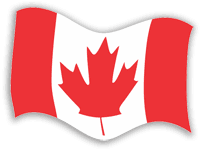|
In the early 1950s, working in the historic East Block of the
Parliament Buildings, Pierre Trudeau’s lifelong preoccupation
with Canada’s constitution took root. Three decades later, as
the country’s prime minister, Trudeau remodelled the Canadian
constitution and embedded into it an explicit guarantee of the
rights and freedoms of all citizens. That was the Constitution
Act of 1982 and the Canadian Charter of Rights and Freedoms —
the most important part of the framework of rules under which
Canadians are governed.
A strong link between human rights and the law emerged after the
crimes of the Second World War became fully known. In 1948 the
United Nations adopted the Universal Declaration of Human
Rights, affirming that every person had inalienable rights; the
document was drafted in its original form by a Canadian, John
Humphrey. Saskatchewan was the first of the Canadian provinces
to adopt a law protecting human rights and other provincial
legislatures followed with similar legislation.
The Parliament of Canada recognized its responsibility to
safeguard the democratic liberties of Canadians in a 1960 Bill
of Rights that guided Parliament, the courts and the federal
government, but was not binding on the provinces. The Bill of
Rights was a tentative move towards the Trudeau’s Charter.
Trudeau shared in what has been called the post-Second World War
rights revolution. He championed the UN universal rights
declaration, worked with the Canadian Civil Liberties
Association and fought against the domination of Church and
government in Quebec. He believed passionately that a just
society was one that protected personal liberty and promoted
individual freedom.
Yet Trudeau also thought that freedom had to be preserved and
extended without destroying order. Balancing the two is a
crucial part of his Charter, which combines the defence of
citizen freedoms with a concern for the rights of groups within
society and the interests of the country as a whole. Thus
Section 1 of the Charter states that personal rights and
freedoms have reasonable limits.
The Charter does not belong to Trudeau alone. Interest groups
and individuals made their views known to the government and the
Parliament of Canada, resulting in important protections for
gender equality, multiculturalism, and aboriginal rights.
The Charter protects:
-
The fundamental freedoms of thought, speech, religion, and
peaceful assembly
-
The democratic rights of every citizen to vote in regular elections
-
Mobility rights to work, live in, or move to any part of Canada
-
The legal rights of presumption of innocence and a fair trial
-
The right to the equal protection and equal benefit of the law
without discrimination based on race, national, or ethnic
origin, colour, religion, sex, age, or mental or physical
disability
-
The official languages of English and French in the government
and legislatures of Canada and New Brunswick
-
French and English language group rights to education in
their mother tongue where there are sufficient numbers to
justify it.
Any one of the legislatures of Canada can pass a law that goes
against, or overrides, the Charter, except when it affects
democratic, mobility, and language rights. Such a law can only
be for five years, although it can be reenacted for additional
periods of five years. This provision of the Charter, Section
33, was a bitter disappointment to Trudeau, but it was a
necessary compromise to get provincial support for the
Constitution Act. Canadian legislatures have seldom used Section
33.
A considerable and complex body of Charter law has been built up
since 1982, and the Supreme Court of Canada has given opinions
in hundreds of cases. In Multani v. Commission scolaire Marguerite-Bourgeoys in 2006,
citing the Charter’s protection of freedom of religion, the
Supreme Court ruled that a young Sikh male had the right to come
to school with a kirpan, a small sheathed ceremonial sword worn
by Sikhs as a religious symbol.
In the 1992 Butler case, the court ruled that freedom of speech
under the Charter did not extend to the publication and
distribution of pornography. Here the emphasis was placed on the
values of and risks to Canadian society.
The Chief Justice of Canada, Beverley McLachlin, uses Butler to
explain the difference between how Canadians and Americans
interpret rights. Canadian law, she points out, protects
language, religions, aboriginal communities and the general
public welfare, while in the United States, “the ethic of the
individual is foremost.”
Critics complain that the Charter has put too much law in the
hands of powerful judges who are not accountable to Parliament
or the people. Yet the Charter is popular with Canadians. It has
become, in McLachlin’s glowing words, part of how the country
defines itself — a forward-looking statement of “the distinctive
Canadian values of respectful tolerance, pluralism, and
interlocking rights and responsibilities of the individual and
the state.”
Norman Hillmer is Professor of History and International Affairs
at Carleton University. The best place to read about the
Canadian Charter of Rights and Freedoms is on the internet. The
text of the charter is readily available there, and websites
such as those of the Library of Parliament, the Supreme Court of
Canada, and the Canadian Encyclopedia have further information.
Next Instalment: Democracy in Canada: Elections and Voting
The Canadian Experience
is a 52-week history series designed to tell the story of our
country to all Canadians. Sponsored by Multimedia Nova
Corporation and Diversity Media Services/Lingua Ads partners,
the series features articles by our country’s foremost
historians on a wide range of topics. Past articles and author
bios are available at http://www.cdnexperience.ca.
The Canadian Experience
is copyright © 2010-2011 Multimedia Nova Corporation.
|
List of
published "Canadian Experience" articles |


